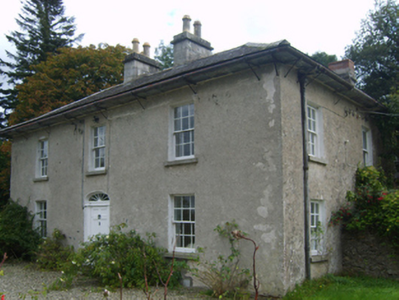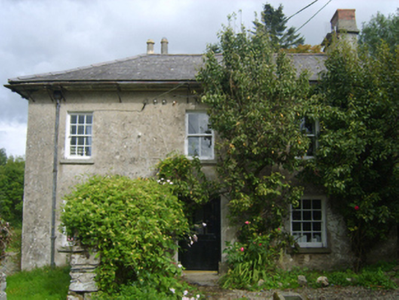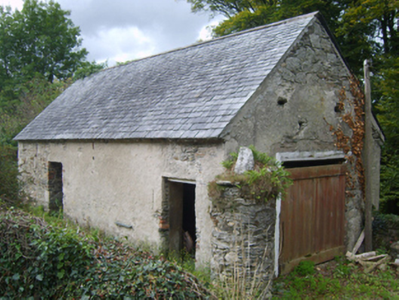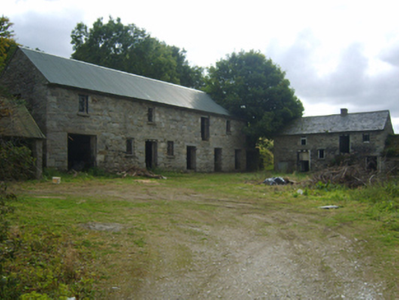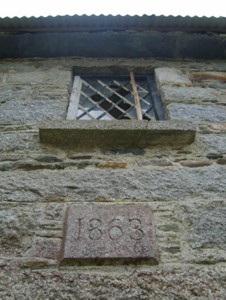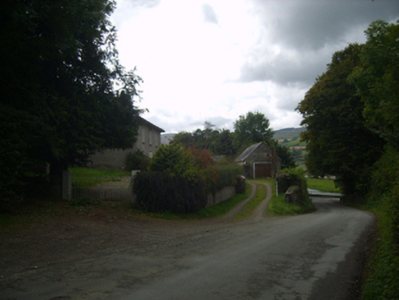Survey Data
Reg No
15700406
Rating
Regional
Categories of Special Interest
Architectural, Artistic, Historical, Social
Original Use
Farm house
Date
1825 - 1830
Coordinates
290038, 159665
Date Recorded
28/09/2007
Date Updated
--/--/--
Description
Detached three-bay two-storey farmhouse, built 1829, on an L-shaped plan with single-bay (north) or three-bay (south) two-storey side elevations. Sold, 1880. Occupied, 1901; 1911. Sold, 1945. Now disused. Hipped slate roof on an L-shaped plan with clay ridge tiles, paired granite ashlar central chimney stacks having cut-granite stringcourses below capping supporting terracotta or yellow terracotta tapered pots, and cast-iron rainwater goods on slightly overhanging slate flagged eaves retaining cast-iron octagonal or ogee hoppers and downpipes. Part creeper- or ivy-covered lime rendered walls. Elliptical- or segmental-headed central door opening approached by three cut-granite steps with concealed dressings framing timber panelled door having oversailing fanlight. Square-headed window openings with cut-granite sills, and concealed dressings framing six-over-six timber sash windows. Interior including (ground floor): central hall retaining carved timber surrounds to door openings framing timber panelled doors; and carved timber surrounds to door openings to remainder framing timber panelled doors with timber panelled shutters to window openings. Set in landscaped grounds on a slightly elevated site with cut-granite monolithic piers to perimeter supporting looped wrought iron double gates.
Appraisal
A farmhouse representing an integral component of the early nineteenth-century domestic built heritage of north County Wexford with the architectural value of the composition suggested by such attributes as the deliberate alignment maximising on panoramic vistas overlooking the River Slaney with its rolling backdrop; the compact plan form centred on a restrained doorcase showing a simple radial fanlight; the diminishing in scale of the openings on each floor producing a graduated visual impression; and the slightly oversailing roofline. Having been well maintained, the elementary form and massing survive intact together with substantial quantities of the original fabric, both to the exterior and to the interior, thus upholding the character or integrity of the composition. Furthermore, adjacent outbuildings ("1863") continue to contribute positively to the group and setting values of a self-contained ensemble having historic connections with the Levingstone family including William Levingstone (d. 1888), 'Farmer late of Ballyshonock County Wexford' (Calendars of Wills and Administrations 1888, 392); and Elizabeth "Eliza" Jane Levingstone (----), 'Farmer' (NA 1901; NA 1911).

